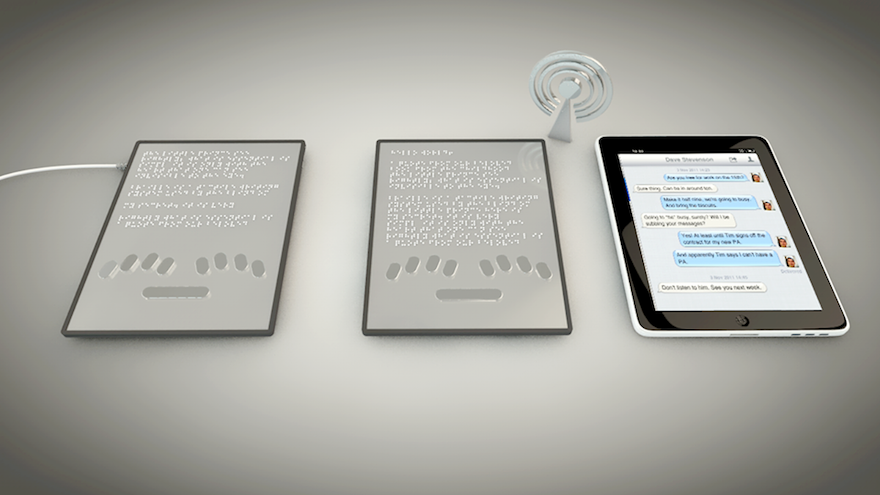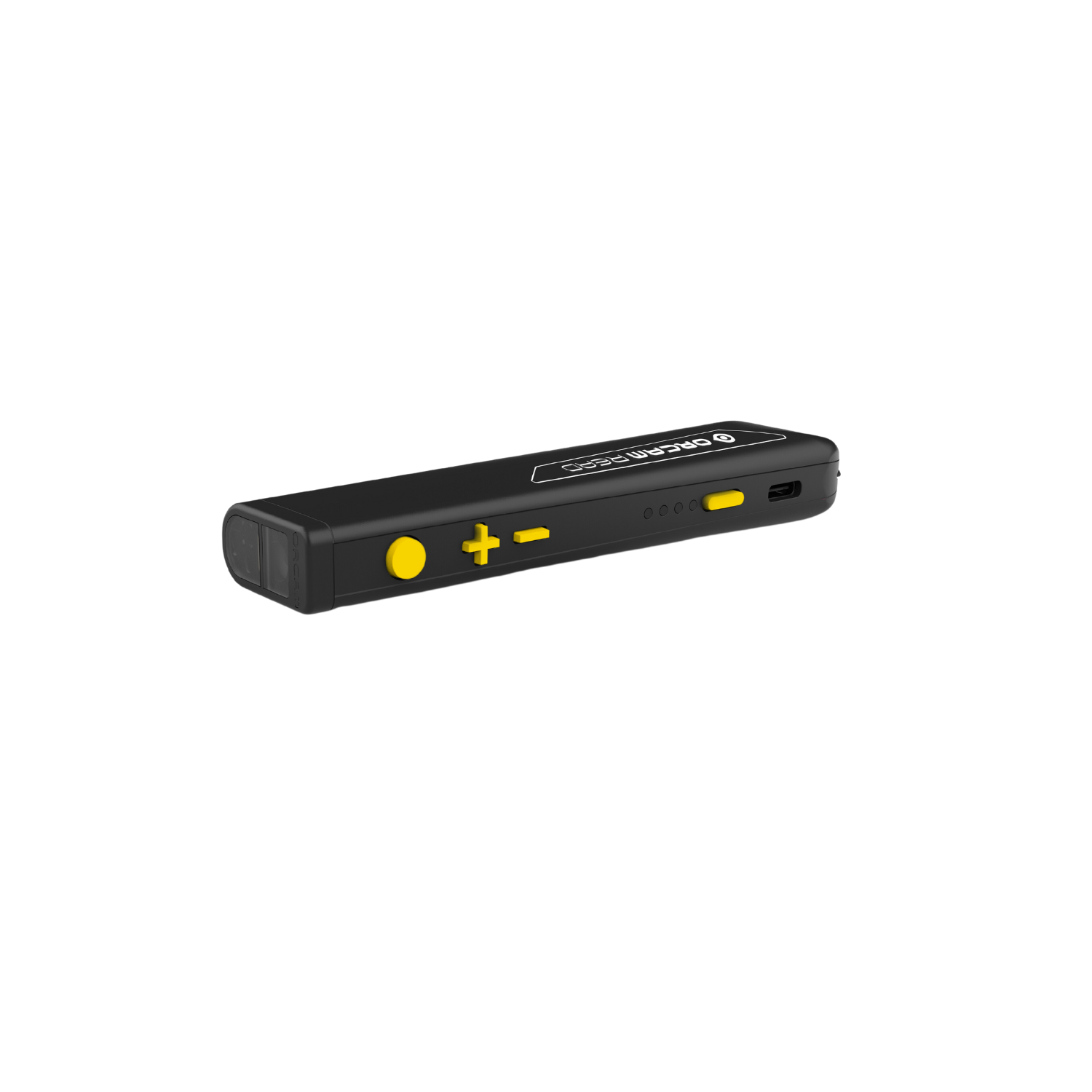Discover Innovative Tools Developed for the Visually Impaired
The advancement of ingenious tools for the visually impaired represents a substantial innovation in availability and freedom. Technologies such as smart glasses with AI capabilities and mobile applications designed to offer acoustic descriptions are reshaping daily experiences for customers.
Smart Glasses for Navigation

Smart glasses made for navigation are changing the method aesthetically damaged individuals connect with their atmosphere. These advanced gadgets utilize a mix of cam technology, expert system, and acoustic feedback to supply real-time details about environments. By employing challenge discovery systems, wise glasses can signal customers to potential dangers, making it possible for much safer wheelchair in both unknown and familiar setups.
The integration of GPS innovation better improves navigating capabilities, allowing customers to receive auditory directions as they move. This hands-free method not only cultivates self-reliance yet likewise encourages aesthetically impaired people to browse city landscapes with boosted confidence. Additionally, numerous clever glasses are furnished with attributes that determine landmarks and road signs, offering contextual details that boosts the individual experience.
Moreover, the growth of these devices is continually progressing, with business working to boost the accuracy of things recognition and broaden the series of navigational features. As clever glasses become more budget-friendly and accessible, they hold the prospective to significantly transform everyday life for visually impaired individuals. Ultimately, these ingenious tools stand for an important step towards inclusivity, offering enhanced mobility and a better sense of autonomy for individuals navigating the world around them.

Mobile Apps for Daily Living
Just how can mobile applications boost the every day lives of aesthetically damaged people? Mobile apps are reinventing the means aesthetically damaged individuals navigate their settings, handle everyday tasks, and access info. These applications supply vital assistance via different functionalities, promoting freedom and improving lifestyle.
Several ingenious mobile apps are designed especially for everyday living. Applications like Be My Eyes attach visually impaired customers with sighted volunteers via video telephone calls, allowing them to get real-time help with jobs such as reading labels or navigating strange spaces. Likewise, Seeing AI, created by Microsoft, uses synthetic knowledge to describe environments, checked out message, and recognize objects, efficiently changing a mobile phone into a powerful device for everyday help.
Furthermore, navigating applications customized for the visually damaged, such as Aira and BlindSquare, use audio-based instructions and ecological info, enabling customers to traverse their surroundings safely and confidently. Past navigation and prompt support, mobile applications also sustain company and job management, with attributes that aid individuals establish reminders, create order of business, and track appointments. In recap, mobile applications work as crucial sources, equipping visually impaired individuals to lead more independent and satisfying lives.
Wearable Technologies for Aid
Empowerment via technology is progressively noticeable in the realm of wearable gadgets designed to help aesthetically damaged individuals. These innovative devices incorporate perfectly into day-to-day live, boosting navigating and giving vital responses to users. For example, clever glasses outfitted with cams can acknowledge faces and read text out loud, enabling users to connect more confidently in specialist and social setups.
One more remarkable innovation is using haptic responses systems in wearable gadgets. These systems make use of resonances or other responsive signals to communicate details regarding the customer's environment, such as barriers or adjustments in terrain, boosting flexibility and safety. Wearable modern technologies additionally include wristbands that link to smart devices, alerting individuals to notices via subtle resonances, therefore boosting connection without dependence on aesthetic cues.
As these technologies remain to develop, they are not just enhancing independence for aesthetically damaged individuals yet likewise promoting a better sense of incorporation in culture. By bridging the void between difficulties dealt with in day-to-day living and the possibility for freedom, wearable technologies work as crucial tools in the mission for equality and empowerment for those with aesthetic problems.
Sound Description Tools
Audio description tools play an essential duty in boosting ease of access for visually impaired people, giving them with the ability to engage with aesthetic media. OCR devices for the blind. These devices use narrated summaries of vital visual components in movies, television shows, and live performances, ensuring that users can fully comprehend the context and feelings contact lens test shared via visuals
Audio summary can be incorporated right into different platforms, including streaming solutions, cinema screenings, and live cinema. Numerous preferred streaming solutions currently consist of audio summary as an access feature, enabling viewers to select it quickly. Along with traditional media, specialized apps also exist, providing audio descriptions for art exhibitions, galleries, and other cultural events.
The performance of audio summary depends upon the ability of the narrators, that have to share visual details succinctly without diminishing the original sound. Innovations in this area are likewise paving the means for more tailored experiences, where users can readjust the level of detail and pacing according to their choices.
Braille Innovations and Instruments
Braille devices and innovations have actually dramatically changed the way visually damaged people engage with text and info. Modern developments eye exam appointment have led to the development of versatile tools that boost proficiency and self-reliance among users.
Moreover, mobile Braille notetakers integrate traditional Braille input with modern-day capabilities, promoting note-taking, organizing, and paper modifying on the go. OCR devices for the blind. These small devices frequently feature text-to-speech abilities, bridging the void in between Braille and acoustic information
Additionally, ingenious Braille printers have arised, allowing individuals to produce Braille tags, documents, and instructional materials efficiently. This access fosters higher involvement in instructional and specialist environments, ultimately advertising inclusivity.
Moreover, research right into clever Braille innovations proceeds to broaden. Devices that integrate expert system are being checked out to provide real-time navigating assistance and contextual information, boosting the individual experience in varied settings. Overall, these advancements mirror a commitment to encouraging visually impaired individuals via technology, ensuring they can conveniently access and involve with the globe around them.

Conclusion
The improvement of ingenious tools for the aesthetically impaired substantially improves freedom and top quality of life. These technologies not just foster greater addition however likewise advertise autonomy in day-to-day activities, inevitably adding to a more equitable and available culture for visually damaged individuals.
As smart glasses come to be much more obtainable and budget friendly, they hold the potential to substantially transform everyday life for visually impaired customers. Mobile apps are changing the means visually impaired customers navigate their settings, manage daily tasks, and access info. Applications like Be My Eyes connect aesthetically damaged customers with sighted volunteers via video phone calls, allowing them my website to get real-time support with jobs such as reading tags or navigating strange spaces.In addition, navigating applications tailored for the visually impaired, such as Aira and BlindSquare, use audio-based directions and environmental information, allowing individuals to traverse their environments securely and confidently.The innovation of cutting-edge devices for the aesthetically damaged substantially enhances freedom and quality of life.